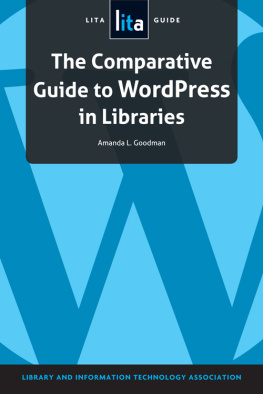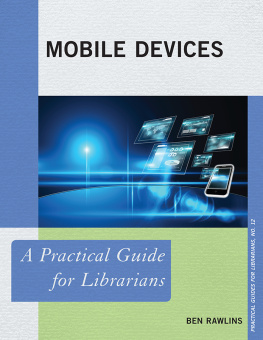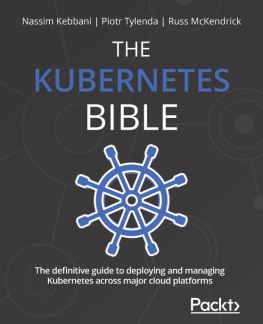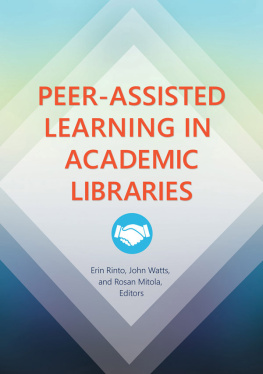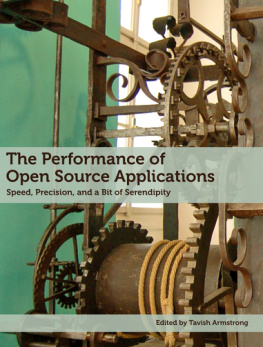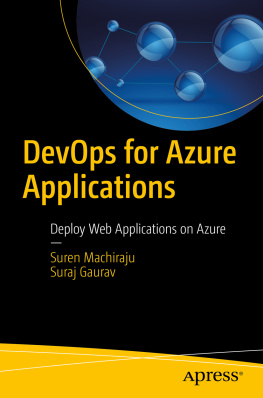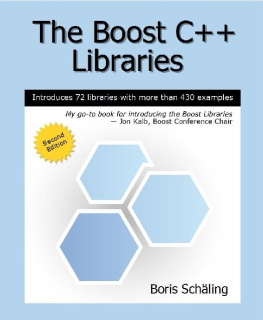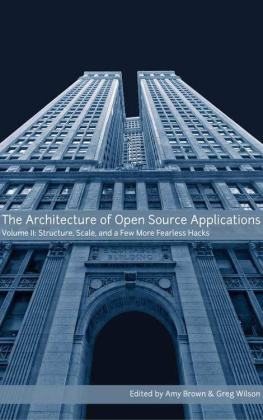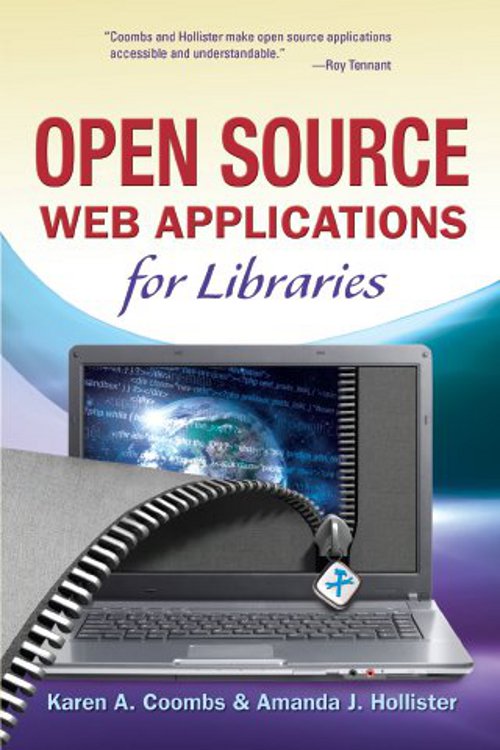
First printing, 2010
Open Source Web Applications for Libraries
Copyright 2010 by Karen A. Coombs and Amanda J. Hollister
All rights reserved. No part of this book may be reproduced in any form or by any electronic or mechanical means, including information storage and retrieval systems, without permission in writing from the publisher, except by a reviewer, who may quote brief passages in a review. Published by Information Today, Inc., 143 Old Marlton Pike, Medford, New Jersey 08055.
Publishers Note: The authors and publisher have taken care in preparation of this book but make no expressed or implied warranty of any kind and assume no responsibility for errors or omissions. No liability is assumed for incidental or consequential damages in connection with or arising out of the use of the information or programs contained herein.
Many of the designations used by manufacturers and sellers to distinguish their products are claimed as trademarks. Where those designations appear in this book and Information Today, Inc. was aware of a trademark claim, the designations have been printed with initial capital letters.
Library of Congress Cataloging-in-Publication Data
Coombs, Karen A.
Open source Web applications for libraries / Karen A. Coombs and Amanda J. Hollister.
p. cm.
Includes bibliographical references and index.
ISBN 978-1-57387-400-7
1. Open source software--Library applications. I. Hollister, Amanda J., 1967- II. Title.
Z678.93.O65C66 2010
005.3--dc22
2010035599
President and CEO: Thomas H. Hogan, Sr.
Editor-in-Chief and Publisher: John B. Bryans
Managing Editor: Amy M. Reeve
Project Editor: Rachel Singer Gordon
VP Graphics and Production: M. Heide Dengler
Book Designer: Kara Mia Jalkowski
Cover Designer: Norma Neimeister
www.infotoday.com
OPEN SOURCE
WEB APPLICATIONS
for Libraries
Dedications
and Acknowledgments
This book is dedicated to my parents. To my mom, who taught me to be independent and self-reliant. Your example instilled in me the value of having freedom and flexibility in as many things as possible. And to my dad, who showed me how to rip stuff apart and put it back together. Your fearless and curious nature has inspired me to want to know how stuff works and to be able to fix things.
Karen A. Coombs
This book is dedicated to my husband and to my mother. To my husband for lighting a fire under my arse to get this book done. To my mother, from whom I received my sense of humor, combined with the faith that things will always work out. Its a powerful gift to be able to laugh at the crap life sometimes brings. Jag lskar dig och saknar dig mamma.
Amanda J. Hollister
This book wouldnt have been possible without the help of the many colleagues who took the time to talk about their projects, answer questions, troubleshoot on the fly, and create patches so we could install, test, screen capture, etc. Many thanks to Casey Bisson, John Blyberg, Andrew Darby, Amanda Etches-Johnson, Sebastian Hammer, Mark Jordan, Demian Katz, Terry Reese, Nick Ruest, Bess Sadler, Kevin Stranack, and Ken Varnum. The authors would also like to thank Blake Carver and LISHost for providing us with much-needed testing space; Dan Chudnov for his assistance with , What Is Open Source Software?; and the Code4Lib community (code4lib.org), many of whom provided troubleshooting and answered questions.
Open source software in libraries covers a wide range of applications that one could, in fact, write several books on. This book focuses on one piece of the puzzle: open source web applications and their use in libraries. A web application is a piece of software that is accessed via a web browser over a network (either the internet or an intranet). The majority of the web is made up of these web applications; sites such as Flickr and Gmail can be considered web applications. Libraries have increasingly worked toward deploying web applications to meet the needs of their users and to serve internal work processes. In our work as web librarians, weve witnessed this transition and have been asked to create or deploy an increasing number of web applications, many of which are open source.
As a result, over the course of our careers, we have encountered and used a variety of open source web applications in order to meet the changing needs of libraries. Sometimes weve worked with open source software out of financial necessity, but increasingly weve deliberately chosen to work with open source software. We prefer open source software because it provides us with more flexible and adaptable technologies to solve whatever problems we are working on.
We found it both serendipitous and ironic that, while we were completing this book, the transition of the whitehouse.gov site to Drupal (an open source content management system) was in the news. This announcement is just one of many indicators that open source software has become increasingly mainstream. Significant portions of the internet have open source components. Companies such as Google and Sony use open source infrastructure, and websites such as PBS Engage (www.pbs.org/engage), the Guggenheim Museum (www.guggenheim.org), IHOP (www.ihop.com), the University of Maine (www.umaine.edu), and Best Buys local store blogs (stores.bestbuy.com/577) are powered by open source web applications.
Yet as web librarians weve also discovered a general lack of knowledge among our colleagues about the open source tools available to libraries and a general feeling of fear and uncertainty about open source software. Weve found that libraries and librarians think of open source software as being difficult to install. Additionally, we often hear there isnt any open source thing that does X, even when applications that provide such functionality do exist. It worries us that libraries lack good information when deciding which web tools (proprietary or open source) to implement.
Because of this information gap, we decided that one of our goals for this book would be to dispel some of the misconceptions about open source software in libraries. Most of the applications discussed in this book can be installed in 15 minutes or less. Some of the featured applications can easily be tried out with BitNami installations (www.bitnami.org), even without having access to a server.
Additionally, wed like to shift the focus of open source software in libraries away from open source integrated library systems, such as Koha and Evergreen, to smaller web applications. There are many wonderful projects in this arena that can help libraries fulfill their goals and mission. Well do our best to highlight the best of these web applications available for libraries.
The books content builds in a progressive fashion, from discussing the basicswhat is open source softwareto providing an overview of the current open source NextGen catalog software. Although you are welcome to read the book from cover to cover, it is structured so that you can also choose to read just a particular chapter on a particular application. The first part gives an introduction to open source web applications. provides an overview of hosting options for open source software and will be helpful for libraries trying to decide where to host their software.
The remainder of the book is divided into four broad sections: Blogs and Wikis, Content Management Systems, Reference and Instruction Tools, and Resource Discovery Tools. In the Blogs and Wikis section, we discuss two blogging tools and two wiki applications. In , the last chapter in this section, focuses on MediaWiki, the open source wiki tool that powers Wikipedia.


